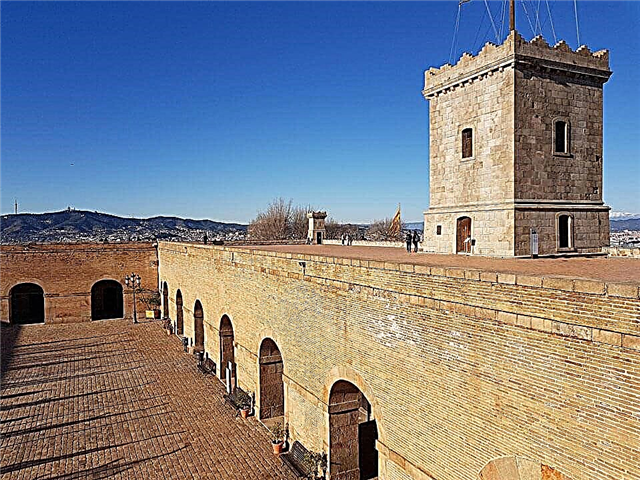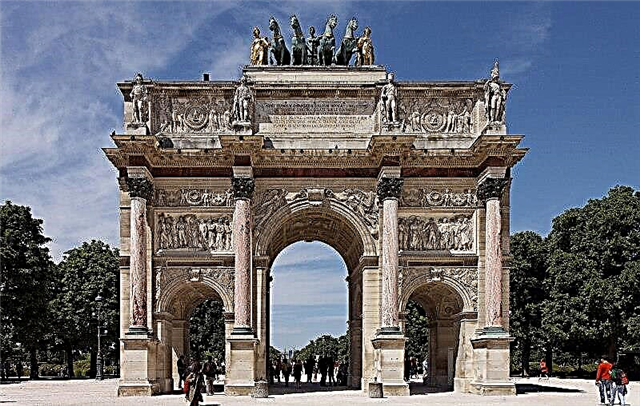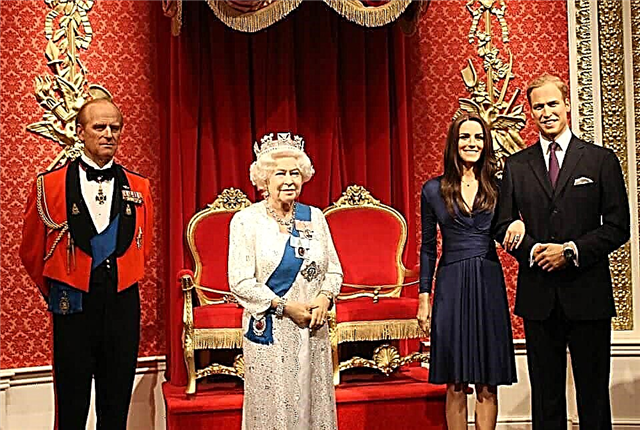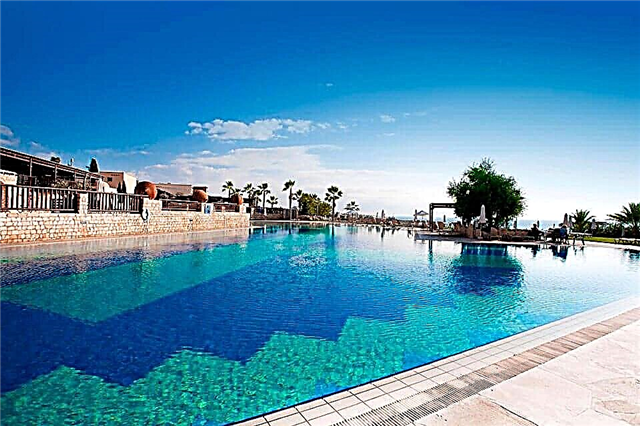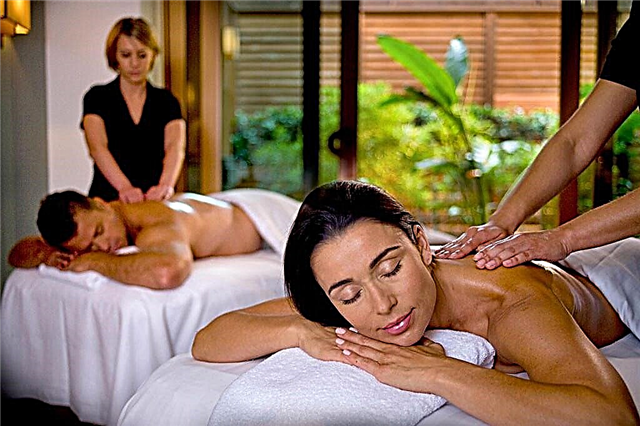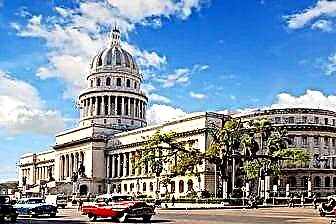Hot tropical Cuba is one of the best places for a beach holiday. The Caribbean coast pleases tourists with the turquoise color of clear water, white sand and sincere hospitality of the locals. The resorts of Havana, Varadero and Villa Clara open the doors of comfortable hotels and always offer quality service.
People go to colorful Cuba for the passionate rhythms of salsa and rumba, for the constant atmosphere of the holiday that reigns on the streets painted in bright colors. The spirit of freedom, the almost unconditional adoration of the national hero Che Guevara, vintage cars on the streets and constant siesta make this country unique and different from others. Well, Cuba is waiting for the triumph of life, dancing, spicy cuisine and an even Caribbean tan.

The best hotels and hotels at affordable prices.
from 500 rubles / day
What to see in Cuba?
The most interesting and beautiful places, photos and a short description.
Capitol
The former parliament building, built in 1929. The deputies sat in it for 30 years before the victory of the Cuban Revolution, after the Capitol was turned into a conference room and offices for some ministries. The building is built in a pompous and solemn style and at the same time resembles St. Peter's Cathedral in the Vatican and the American Capitol in Washington. The project was developed by the architect Eugenio Piedra.

Museum of the Revolution
The main museum of Cuba, housed in the former presidential palace. After the fall of the Batista regime, many of the luxurious interior furnishings (for example, the lamps of the Tiffany jewelry company) were removed, but the original furniture and decoration remained. The museum has 30 rooms and 9000 exhibits that tell about the history of Cuba since the 15th century. The main emphasis, of course, is on the period of the Cuban Revolution.

Grand Theater of Havana
The theater building is a wonderful example of the colonial baroque style. The construction was carried out by the Belgian architect Paul Belau in 1915, or rather he made the reconstruction of the old theater building in 1838. The stage was named after the Bolshoi Theater of Moscow in 1985 at the suggestion of the ballet prima Alicia Alonso. You can get inside not only for a concert, but also with a special excursion.

National Museum of Fine Arts
The largest art museum in Cuba, one of the most visited cultural sites in Havana. The exposition has existed since 1913, but only in 1954 a separate building was built for it. The rich collection of the museum features works by Latin American and European artists of the 18th-21st centuries, exhibits from earlier periods. It also exhibits many works related to contemporary art.

Havana Cathedral
The main Catholic cathedral of the country, built in a rather original style. The architects have moved away from traditional European canons and added a bit of local flavor. The cathedral has asymmetrical towers, coral was added to the usual stone when laying the walls, the lines of the facade were smoothed. The remains of Christopher Columbus were kept in the temple for almost 100 years, but then they were sent to Spain.

Ernest Hemingway House Museum
The world famous writer spent the last years of his life in Cuba. At the insistence of his last wife, he bought an estate near his favorite bars. The house was converted into a museum in 1962. Everything remained exactly the same as it was during the life of the writer. Almost the entire free space is occupied by books in dozens of languages of the world, bookshelves reach the ceiling. Together with the Hemingway couple, their numerous pets lived.

Rum Museum "Havana Club"
A bar-museum, where the visitor will be introduced to the history of the emergence of the famous drink, the technology of its production and will be offered to taste several varieties. The Havana Club is the most visited museum in Cuba, with a million tourists a year. On weekends, the venue organizes dances to the accompaniment of an orchestra, and an atmosphere of endless celebration reigns around.

Boulevard Prado
One of the central streets of Havana, stretching from Central Park to the seaside promenade. The boulevard appeared at the end of the 18th century, was completely reconstructed and updated in 1929. Colonial-style mansions are lined along the edges of the street, the architecture of the houses is clearly influenced by Spain. Walking along the Prado, with some assumptions, you can imagine that you are somewhere in Madrid or Seville.

Malecon embankment
Havana's main promenade, loved by locals and tourists alike. Stretches from the fortress of San Salvador de la Punta to new residential areas. Here you can learn a lot about the original culture of Cubans, drink aromatic coffee or strong rum, and dance salsa right on the pavement. Elderly Cubans love to fish on the waterfront, while young people enjoy the sunsets and make dates.

Plaza de Armas
The main square of Havana, where cultural and government institutions are concentrated. When designing it was assumed that in the event of an uprising or armed conflict on the square, you can quickly distribute weapons (hence the name - "armas" in Spanish means "weapons"). The place is the heart of Old Havana; in the center there is a monument in honor of the revolutionary Carlos Manuel Cespedes.

Revolution square
A large square in the capital of Cuba, where Fidel Castro often made speeches for many hours and where meetings of many thousands were held. In the middle there is a high tower with an observation deck, along the edges of the buildings there are graphic portraits of Che Guevara and Fidel Castro. Behind the observation tower is the imposing Palace of the Revolution. Due to its size, the area around the square looks a bit deserted.

José Martí Memorial
Installed on the Revolution Square in 1996. Jose Marti is a poet, revolutionary and highly respected figure in society. Inside the monument, a repository of documents, engravings and other relics telling about the life and work of a public figure is organized. The statue is located in front of the observation tower in the middle of the square. The Havana José Martí Memorial is one of the many monuments to the poet in the country.

Mausoleum of Che Guevara
The tomb of the great revolutionary Che Guevara, still beloved by all Cubans. The place for the mausoleum was not chosen by chance - the decisive battle of the Cuban Revolution took place in the city of Santa Clara, where the commandante won. The building was built by Cuban volunteers in 1988. The ashes of Che Guevara and his associates, transported from Bolivia, were buried here only in 1997.

Fortress La Cabana and El Morro
Both fortifications rise above the peninsula on the west coast of Havana and guard the passage to the bay. The forts are part of the Morro Cabagna Historical Park. El Morro was built by the Spaniards in the 16th-17th centuries to protect their newly acquired possessions, La Cabana appeared in the 18th century. The building served as a garrison, warehouse and prison in different periods. In the evenings, the walls are illuminated.

Fortress of La Real Fuersa
The fort is one of the oldest in Latin America, originally it served as a defense against pirate attacks. The fortress was erected in the middle of the 16th century, over the next two centuries it was repeatedly rebuilt and fortified. When defensive functions lost their importance in the 19th century, an archive was organized in the building, then a library and a ceramics museum were located here. In the 2000s. a maritime museum was established in the fortress.

Fortress of San Pedro de la Roca
A 17th century defensive structure built to protect the city of Santiago de Cuba. Construction work lasted over 40 years. The fortress was needed to protect the city from British pirates who constantly attacked the Cuban harbors.In the first half of the 20th century, the building was in disrepair, but then it was restored and entered the UNESCO lists. Now in the castle there is a museum of the history of piracy.

Alexander Humboldt National Park
Territory in the North-East of Cuba with a unique tropical ecosystem. In 2001, UNESCO included the park in its protected lists. The area is named after a German explorer who visited the island in the early 19th century. Tourism on the territory of the reserve began to develop relatively recently, after the land was declared a nature protection zone. Now the park can be visited as part of an excursion.

Baconao national park
Protected natural area near the city of Santiago de Cuba. The park is famous for the valley, where there are 200 life-size dinosaur and mammoth sculptures. The reserve has an aquarium with a tunnel, from where it is interesting to observe the inhabitants of the Caribbean Sea. Also, tourists will be interested in the museum of old cars. There are hotels and beaches in the coastal area of Baconao, but they are not considered the best in Cuba.

Bellamar cave
The cave is located several tens of kilometers from the Varadero resort. Her visit is included in many excursions called "jeep safari". The cave was discovered in the middle of the 19th century by local shepherds who were looking for lost cattle. Its age, according to various estimates, is about 40 thousand years. Tourists can only go 300 meters deep, the rest of the levels are closed to the public.

Vinales Valley
National park in the valley of the Sierra de los Organos mountain range. The reserve is taken under the protection of UNESCO. The territory consists of flat karst formations, flat hills (locals nicknamed them "elephant backs"), underground rivers, caves and waterfalls. In ancient times, Indian tribes lived in this territory. The Viñales Valley has a botanical garden and a former slave camp of Palenque de los Cimarrones.

Colon cemetery
Cemetery them. Christopher Columbus in Havana, where cultural and public figures of Cuba, who played an important role in the life of the country, are buried. There are thousands of graves on the vast territory, many are decorated with beautiful marble monuments. Chapels, statues, mausoleums are scattered everywhere, graves are fenced with figured fences. The cemetery can be regarded as an independent cultural monument.

Bakunayagua bridge
An engineering structure built in the middle of the 20th century to shorten the route from Havana to Matanzas. Construction lasted only two years. The bridge is supported by 41 columns over 100 meters in height, the total length of the structure is over 300 meters. Nearby there is an observation deck overlooking the valley of the Yumuri River. Here you can also dine and listen to national Cuban music.

Villa Dupont
A mansion previously owned by an American millionaire. Located on the Icacos Peninsula. Before the victory of the Cuban Revolution, wealthy foreigners settled in this area and built themselves luxurious villas. After 1959, the land was nationalized along with the houses. From that moment on, the "Las Americas" restaurant has been operating at the Villa Dupont, you can go to the mansion itself for money along with a tour.

Cabaret Tropicana
Cuba's premier dance show since 1939, as well as the main entertainment center every tourist aspires to get to. Located on the grounds of Villa Mina. It hosts colorful concerts, costumed performances and performances. The Tropicana collective consists of more than 200 dancers, singers and musicians. During the performance, guests are offered national cuisine, Cuban rum and a variety of cocktails.

Varadero
A popular resort with many great hotels, trendy clubs and fine dining restaurants. The tourist infrastructure has been developing since the 30s. XX century. The beaches of Varadero are a kingdom of white sand and azure sea, a triumph of exotic nature. The resort's coastline has been repeatedly recognized as the best in the world. Varadero is a popular holiday destination for American and European travelers.



